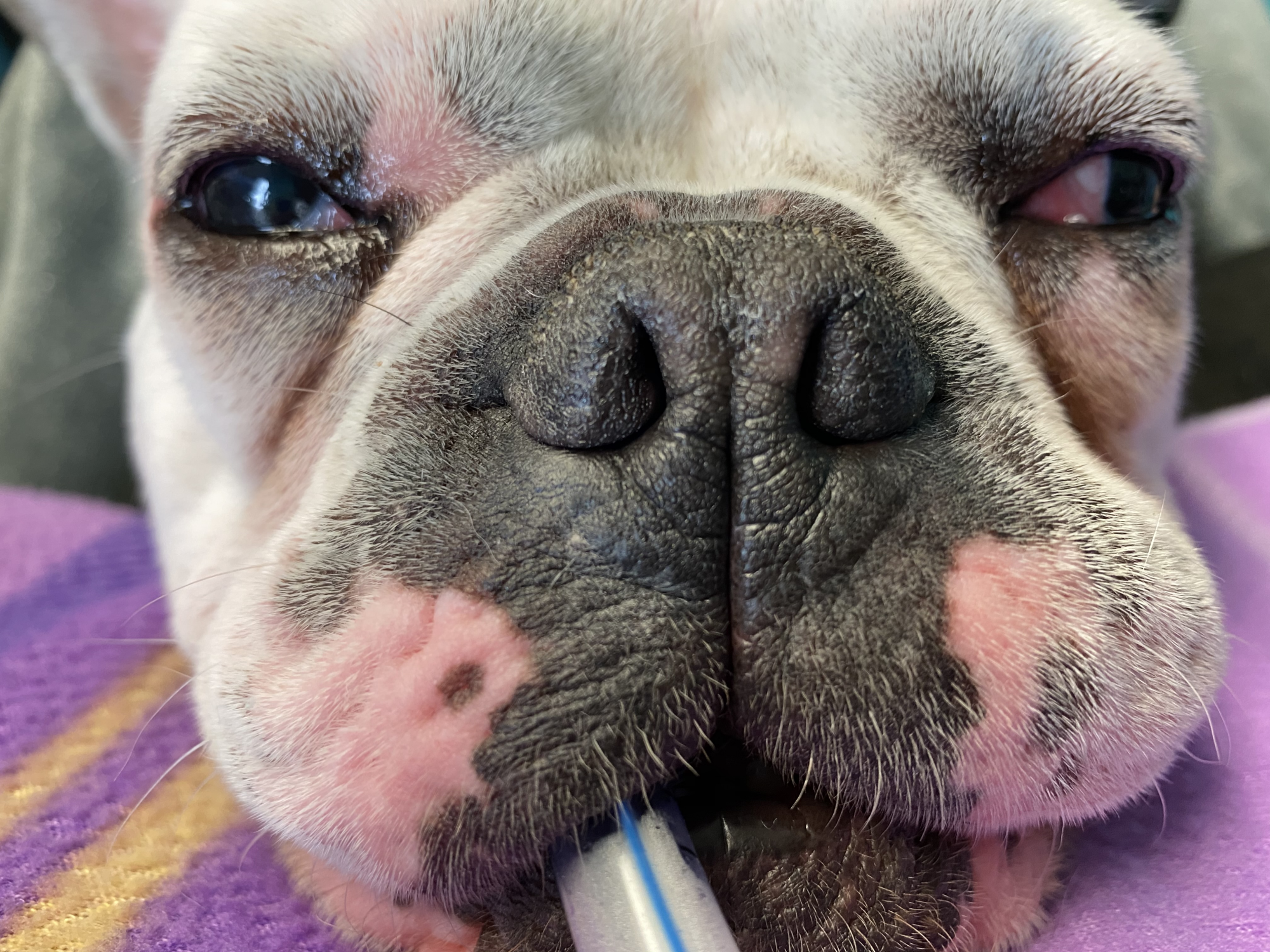Dr. Phil Zeltzman’s Blog
Guess who had a nose job today?
This is Kasper, a cute 3 year old Frenchie (French Bulldog)

He had a classic case of “brachycephalic syndrome” (because of his smooshed nose) (yes it’s a technical word), that caused snoring and difficulty breathing.
Brachycephalic syndrome usually has 4 parts:
. A tiny windpipe, which we can’t do anything about.
. An elongated soft palate, which means that the back of the roof of the mouth is so long that it covers the opening of the windpipe. When it vibrates, it causes snoring. Surgery involves shortening it.
. Saccules are fleshy structures at the opening of the airway. When brachycephalic breeds have difficulty breathing, over time, the saccules are mechanically pulled out into the airway – and further block the flow of oxygen. Surgery requires removing them.
. Stenotic nares, aka tiny nostrils, also prevents getting enough oxygen. Surgery involved making them wider, aka “a nose job” or a rhinoplasty.
Kasper had all 4 conditions, and had all 3 procedures, including the nose job.
PLEASE BE AWARE, THE PICTURES ARE NOT FOR THE FAINT OF HEART.
Here are side-by-side pictures of this nostrils, before and after surgery.

The very next day, Kasper’s owner writes: “Kasper has been amazing and very happy. His breathing is soooooo good!!! No snoring at all. Maybe some light breathing noise but no snoring.
Also no wheezing or reverse sneezes anymore at all. He hasn’t regurgitated food or water at all since surgery. He is eating well. No discomfort at all.
Now we both sleep through the night. I no longer jump out of bed like a ninja to check on him after being woken up by horrible sounds of reverse sneezing and seeing him struggle to take a breath. That in itself has been wonderful for us both!!
He also does not need to prop his head a certain way to breathe when he sleeps. I always kept pillows and stuffed animals in his crate to help him elevate himself to open airways. Haven’t needed those at all since surgery!
I am a very grateful momma!!
Huge success, we are very thankful for the new improved life you have given to Kasper! He can run like the wind now without getting winded.”
After 3 weeks of healing, Kasper had fully recovered and was able to have fun and enjoy a lot more oxygen.
In the right hands, this is typically a very rewarding surgery, with very good outcomes.
Phil Zeltzman, DVM, DACVS, CVJ, Fear Free Certified

Dr. Phil Zeltzman is a traveling veterinary surgeon in Pennsylvania & New Jersey. An award-winning author, he loves to share his adventures in practice along with information about vet medicine and surgery that can really help your pets. Dr. Zeltzman specializes in orthopedic, neurologic, cancer, and soft tissue surgeries for dogs, cats, and small exotics. By working with local family vets, he offers the best surgical care, safest anesthesia, and utmost pain management to all his patients. Sign up to get an email when he updates his blog, and follow him on Facebook, too!

